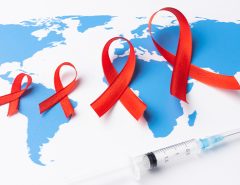The COVID-19 pandemic, the successive lockdowns, and the travel ban severely hit the revenues of hospitals across India. Fewer footfalls of patients, postponement in elective surgeries, revenue loss from the Medical Value Travel (MVT) segment, and increasing costs pushed hospital chains on the back foot. Before COVID-19, around 10-12% of the revenue of major hospital chains came from international patients. That percentage fell sharply before it began rising again as the pandemic waned. In the near future, MVT is expected to contribute 12-15% of hospital revenues with an increase in demand for quality, affordable treatments.
The Medical Tourism Association’s (MTA) Medical Tourism Index (MTI) ranks India 10th out of 46 global destinations, 12th in 20 wellness tourism markets, and 5th in the wellness tourism market in APAC. A huge majority of patients visiting India for treatment are from Bangladesh. The rest are from Afghanistan, Oman, Iraq, Maldives, Nigeria, and Kenya among other countries. Chennai, Mumbai, Delhi, Bengaluru, and Kolkata are the top destinations for MVT in India. Over the years, government schemes have also helped boost the MVT segment which now has a very bright future in India. Also, Indian nurses are among the best in the world; there are nearly 1000 recognized nurses-training centres in India, mostly attached to teaching hospitals, and nearly 10,000 nurses graduate annually in the country. In addition, the highest level of care across all specialties, clinical expertise, cost-effective treatment, smooth processing of medical visas and easily available facilities of interpreters, give India an edge over many other countries in MVT.
The Government’s ambitious project, ‘Heal in India, Heal by India’, has been designed to push Medical Value Travel in India as the segment has huge growth potential. This initiative is expected to boost the traffic of foreign patients and clear the path for strategic partnerships. A total of 37 hospitals including 30 in the private sector across 17 cities in 12 states have been identified for promoting MVT under the Heal in India initiative.
The government is also institutionalizing MVT through the Heal in India initiative to create an enabling framework for providing health services to the world at large. As part of this initiative, a new digital portal is being developed, that promises to remove existing barriers based on experiences documented by international patients in India. In addition, the government is also leveraging India’s G20 presidency to strengthen MVT through partnerships and build the segment as resilient and sustainable.
The e-tourist visa launched in 2014 has been expanded in recent years to include medical visas and medical attendant visas to streamline, ease, and expedite the travel procedures and protocols for allowing multiple entries and long-term stay of patients coming to India for medical treatment.
One of the challenges to MVT in India is the general infrastructure in healthcare. While many Indian hospitals are now at par with global quality in equipment and healthcare professionals, there was earlier virtually no effort in building an ecosystem to attract international patients. Patients spend much of their time in guesthouses near hospitals and run a high risk of catching infections because protocols for medical patient’s lodging are not standardized. There is clearly a need for patient-specific hotels near hospitals. The creation of special healthcare zones comprising hospitals, hotels, wellness centres, and well-equipped recovery units can boost MVT.
Insurance is another large opportunity that India should tap. Selling Indian health insurance to travellers could potentially generate an additional $9 billion in premium and patient inflow to India. The government could come out with a framework to prioritize opportunities for India as well as the preferred treatment that could enhance MVT. It can be in graded form with a focus on increasing market share in regions where India already enjoys high credibility in the short term.
The focus in the medium term should be on increasing patient inflow from regions emerging as
catchment countries. In the long term, we must ensure India’s presence in developed countries providing outbound MVT for sustained growth. MVT in India was estimated at around $6 billion in 2022 and is projected to increase to $13 billion by 2026. For that to happen, all stakeholders such as Government, industry, health insurance, and healthcare providers need to collaborate for the segment to take a giant leap.
The author is Chair, FICCI Medical Value Travel Committee & MD and CEO, Fortis Healthcare.





